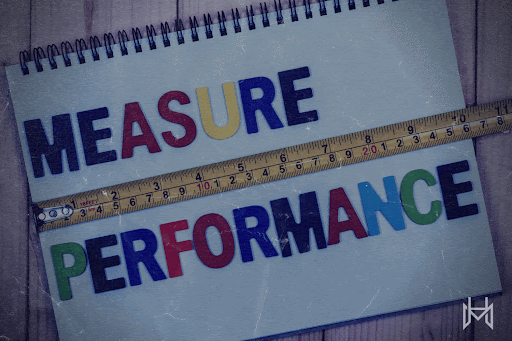
The Science of Budgeting for Paid Social Media Advertising
Social media has become an essential element of every marketing strategy in today’s digital era. Paid social media advertising, in particular, has emerged as a highly effective method for businesses to connect with their target audience and attain their marketing goals.
However, setting a budget for your paid social media advertising campaigns can be a challenging task, and doing it wrong can lead to wasted resources and unsatisfactory results. That’s where the science of budgeting comes in.
In this comprehensive blog, we’ll explore the key components of budgeting for paid social media advertising, including how to determine your budget, choose the right platforms, create effective campaigns, monitor and measure performance, and scale your budget when necessary. By following this science-based approach to budgeting, you’ll be able to optimize your paid social media advertising campaigns and achieve the results you’re looking for.
Understanding Your Goals

Understanding your goals is the first step in the science of budgeting for paid social media advertising. It’s important to begin by defining your objectives, which will serve as your guiding light throughout the process. Without clear objectives, your advertising efforts will lack focus and direction.
Identifying your target audience is also crucial in order to ensure that you are reaching the right people with your message. This involves more than just identifying basic demographic information – you need to consider factors such as interests, behaviors, and online habits.
Finally, establishing your metrics for success will allow you to measure the effectiveness of your advertising efforts. This means setting specific, measurable goals that align with your overall objectives. By regularly tracking and analyzing your metrics, you can make informed decisions about how to adjust your budget in order to optimize your results.
Determining Your Budget
Determining Your Budget is a science that requires a thorough understanding of the factors that affect your budget when it comes to Paid Social Media Advertising. By carefully calculating your maximum allowable cost per click (CPC) and considering other important factors, you can determine your total budget and make the most of your advertising dollars.
When determining your budget for Paid Social Media Advertising, there are several important factors to consider. These include your advertising goals, target audience, competition, and the social media platforms you plan to advertise on. By understanding these factors and how they impact your advertising efforts, you can make informed decisions about budget allocation.
To determine your maximum allowable cost per click (CPC), you need to consider several factors, including your advertising goals, target audience, and competition. By analyzing these factors and using tools such as the Facebook Ads Manager, you can calculate your CPC and set a budget that aligns with your advertising goals.
Once you have calculated your maximum allowable CPC, you can then determine your total budget based on this and other important factors. This includes considering your overall advertising goals and the platforms you plan to advertise on. By taking these factors into account, you can create a budget that maximizes your advertising dollars and helps you achieve your desired results.
Remember, determining your budget for Paid Social Media Advertising is a critical part of your overall advertising strategy. By taking the time to carefully analyze your advertising goals, target audience, and competition, and using tools such as the Facebook Ads Manager, you can create a budget that helps you achieve your desired results and make the most of your advertising dollars.
Choosing Your Platforms
Choosing the right social media platforms is the science of budgeting for paid social media advertising. An overview of the different social media platforms is essential to make informed decisions. Each platform has its strengths and weaknesses, and it’s crucial to understand them. This enables you to choose the platforms that align with your goals and budget, which is the key to making the most of your advertising budget.
First, you need to know the social media platforms you can use for paid advertising. Some of the most popular social media platforms include Facebook, Instagram, LinkedIn, Twitter, and YouTube. Each platform has a unique user base and advertising options.
You have to understand the strengths and weaknesses of each platform before choosing one. Facebook has a massive user base, while LinkedIn is ideal for B2B marketing. Instagram is popular among younger audiences, and YouTube offers video advertising options. Twitter is best for short-form content, and each platform offers different targeting options.
Choosing the right platforms that align with your goals and budget is crucial for successful paid social media advertising. Consider your target audience, campaign objectives, and budget before making a choice. Each platform has different pricing structures, and you need to choose one that offers maximum value for your budget. Ultimately, it’s about maximizing your ROI while staying within your budget.
Creating Your Ad Campaigns
Paid social media advertising is a science and art that involves careful budgeting. It’s all about achieving an optimal balance between ad creativity, targeting, and optimization. The challenge is to develop a campaign that delivers real results while staying within your budget. To do this successfully, you need to establish precise and effective ad targeting strategies that appeal to your core audience. But that’s just the beginning; you also need to create engaging ad creative that will entice your audience and drive conversions.
To maximize your ad effectiveness, you need to have a thorough understanding of the metrics that matter most. This means tracking key performance indicators (KPIs) such as click-through rates (CTR), cost per impression (CPI), conversion rates, and more. By closely monitoring and analyzing these metrics, you can get a better sense of what’s working and what’s not, and make necessary adjustments to improve your campaign performance.
Creating visually striking ad creative that resonates with your audience is key to success in paid social media advertising. This requires a thoughtful, well-planned approach to design and copywriting, as well as a deep understanding of your audience’s interests, preferences, and behaviors. Focus on delivering quality over quantity, and always aim to provide value in your messages.
Effective ad targeting is essential to the success of your paid social media advertising campaign. You need to know exactly who your ideal customers are, what they’re interested in, and where they spend their time online. This information will help you create targeted ad campaigns that appeal to your core audience and deliver maximum ROI.
No matter how well you plan your ad campaigns, tweaking and refining your approach is necessary to achieve maximum effectiveness. This means experimenting with different ad formats and targeting parameters until you find what works best for your business. Use A/B testing to compare and contrast different ad styles, messaging, and targeting methods, and make adjustments as needed.
Ultimately, the success of your paid social media advertising campaign depends on your ability to stay within your budget while achieving your business goals. Keep a close eye on your ad spend and return on investment (ROI), and don’t hesitate to recalibrate your approach if you’re not seeing the results you want. With careful planning, targeting, and optimization, you can achieve success in the competitive world of paid social media advertising.
Monitoring and Measuring Performance

To fully understand the science of budgeting for paid social media advertising, it’s important to start by tracking your ad performance. This involves closely monitoring the engagement generated by your ads and carefully recording the data. By analyzing this information, you’ll be able to identify which ads are resonating with your target audience and which ones are falling flat.
Once you’ve tracked your ad performance, the next step is to analyze your metrics and identify areas for improvement. This involves using the data you’ve collected to pinpoint any weaknesses in your strategy and make adjustments accordingly. By testing different approaches and measuring their effectiveness, you can iterate on your campaigns and improve their overall performance.
One highly effective component of the science of budgeting for paid social media advertising is the use of A/B testing. By creating multiple variations of your ads and testing them against each other, you can determine which strategies are most effective and optimize your campaigns accordingly. This powerful technique allows you to refine your approach and maximize your budget.
At the core of the science of budgeting for paid social media advertising is the goal of maximizing ROI. By carefully analyzing your metrics and testing different strategies, you can refine your approach and optimize your campaigns for maximum impact. This involves constant iteration and refinement, using data as your guide to continually improve your results.
In the ultra-competitive world of social media advertising, staying ahead of the competition requires a deep understanding of data-driven techniques. By carefully monitoring performance, analyzing metrics, and implementing effective A/B testing, you can maintain a competitive edge and achieve the results you’re looking for. With the power of data on your side, you can maximize your budget and achieve success in the complex world of paid social media advertising.
Another key aspect of the science of budgeting for paid social media advertising is ad placement. By carefully selecting where your ads are placed and who sees them, you can maximize your reach and achieve better engagement. This involves studying your target audience and understanding which platforms they use and when, so that you can optimize your campaigns accordingly.
To fully leverage the power of paid social media advertising, it’s important to create a comprehensive strategy. This involves careful planning and a deep understanding of your target audience, as well as a thorough grasp of data-driven techniques. By combining effective ad creation, strategic ad placement, and constant iteration and refinement, you can achieve outstanding results and maximize your budget.
Finally, to truly master the science of budgeting for paid social media advertising, you need to understand how to measure your success with advanced analytics. This involves harvesting data, analyzing metrics, and using sophisticated tools to understand user engagement and behavior. By mastering these techniques, you can gain invaluable insights into your audience and fine-tune your campaigns for maximum impact.
Scaling Your Budget
Scaling Your Budget is a complex process that requires a deep understanding of the Science of Budgeting for Paid Social Media Advertising. This process involves a careful balance of risk and reward to ensure the best possible outcome. Here are the three key components of Scaling Your Budget:
Understanding when and how to scale your budget is the first and most important step in the process. You need to have a clear understanding of when it makes sense to increase your budget and how to do it effectively. This requires a deep understanding of your target audience, your product or service, and the current market conditions.
Once you have a clear understanding of when and how to scale your budget, the next step is to identify opportunities for expansion. This involves looking for new opportunities to reach your target audience, experimenting with new ad formats and targeting options, and testing different creative approaches.
Finally, it’s essential to balance risk and reward when scaling your budget. This means taking calculated risks to maximize your return on investment while minimizing the potential downside. It’s important to stay flexible and adapt to changing market conditions to ensure that your budget is always working as hard as possible to deliver the results you need.
Overall, Scaling Your Budget requires a deep understanding of the Science of Budgeting for Paid Social Media Advertising, as well as a willingness to take calculated risks and adapt to changing market conditions. By following these three key components, you can ensure that your budget is always working as hard as possible to deliver the results you need.
Conclusion
In conclusion, budgeting for paid social media advertising isn’t just throwing money at a campaign and hoping for the best. It’s a science that requires careful consideration of goals and metrics for success. Using data and analytics to inform decisions ensures that you’re making the most of your budget and getting the best results possible. So, don’t be afraid to dive into the numbers and use them to your advantage. With a clear strategy and a little bit of creativity, your paid social media campaigns can be a huge success.
